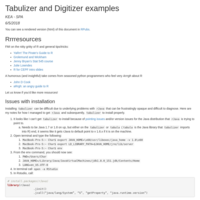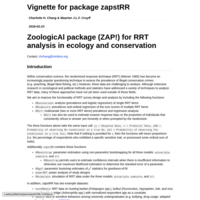Recently Published

EEB 504: Introduction to Version Control
EEB 504-002: Scientific Computing for Biologists. This presentation goes over the principles behind version control with Git and provides several practical examples for solo and collaborative group projects.

Appendix S2: Replication analyses for Examining conservation compliance with the Randomized Response Technique
Replication code for the manuscript introducing the use of an open-source R package for analyzing indirect survey data, specifically Randomized Response Technique (RRT) interview data. An overview of the package can be found at https://github.com/charlottehchang/zapstRR

Digitize and Tabulize examples for KEA
Examples on how to extract figures and tables from PDFs using digitize and tabulizer packages.

Introductory slides for SRE
SRE focused on Co-harvest (Plants and animals subjected to extraction)

An introduction to R (IUCN CEPF)
A very short crash course in R focused on field ecologists based on http://rpubs.com/minebocek/117428 and http://phylo.wikidot.com/2014-summer-research-experiences-sre-at-nimbios-for-undergra

Birds and Beans: Replication Code
This document contains replication code and a dataset to accompany the manuscript “Birds and beans: Comparing avian richness and endemism in arabica and robusta plantations in India’s Western Ghats” by Charlotte H. Chang, Krithi K. Karanth, and Paul Robbins.
The central question addressed by this dataset is whether or not habitat specialist birds (forest-dependent, endemic, and IUCN Red-Listed species) exhibit different responses to Coffea arabica and Coffea canephora (robusta strain) plantations. Regional and global trends indicate that robusta production may be increasing at the cost of arabica, and this change may have biodiversity consequences as robusta is typically grown under full-sun, open habitat management, while arabica is more often shade-grown.
In this analysis, one can replicate habitat specialist individual-based rarefaction, asymptotic richness estimates, ordination, and distance-sampling abundance modeling.

zapstRR package vignette
This document contains example analyses provided by the new package zapstRR, which provides user-friendly estimators for randomized response technique data.